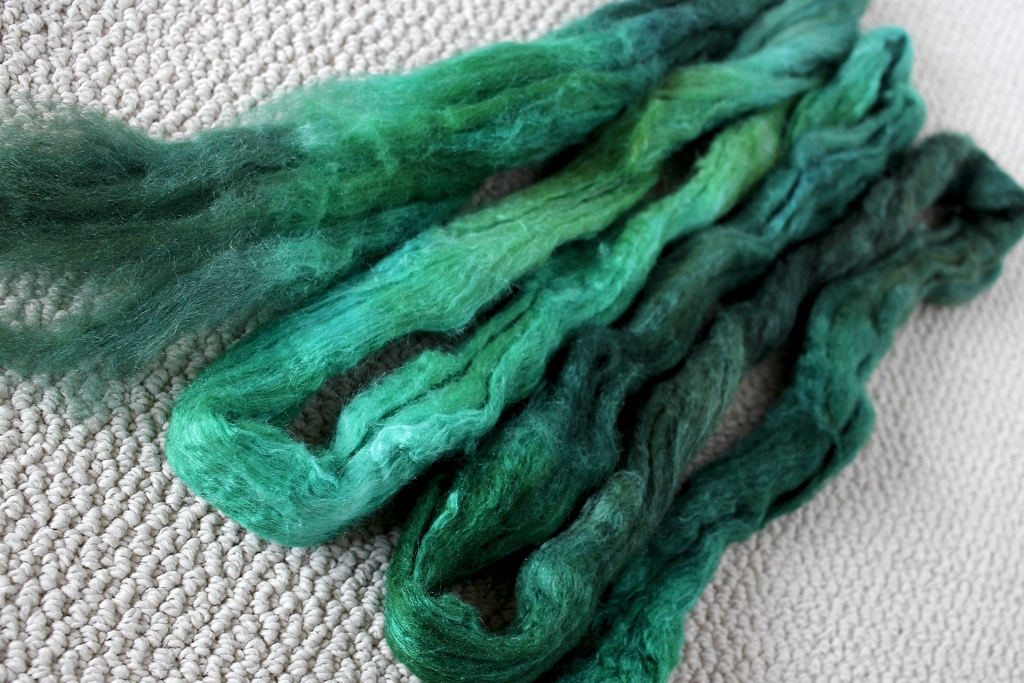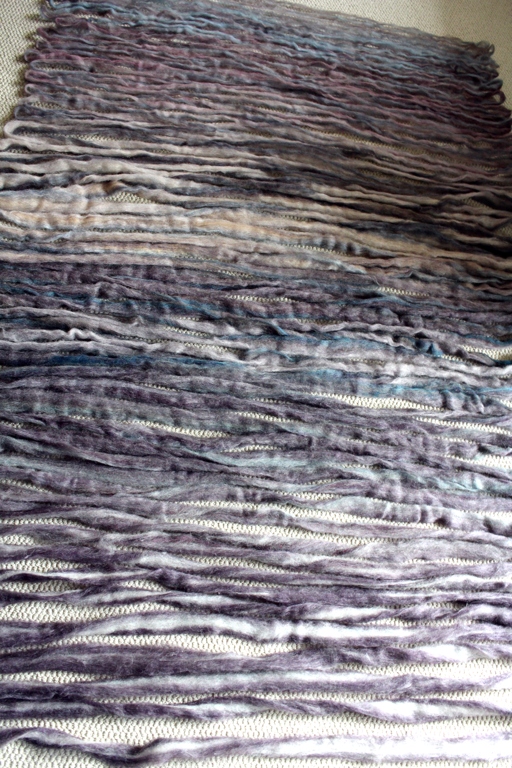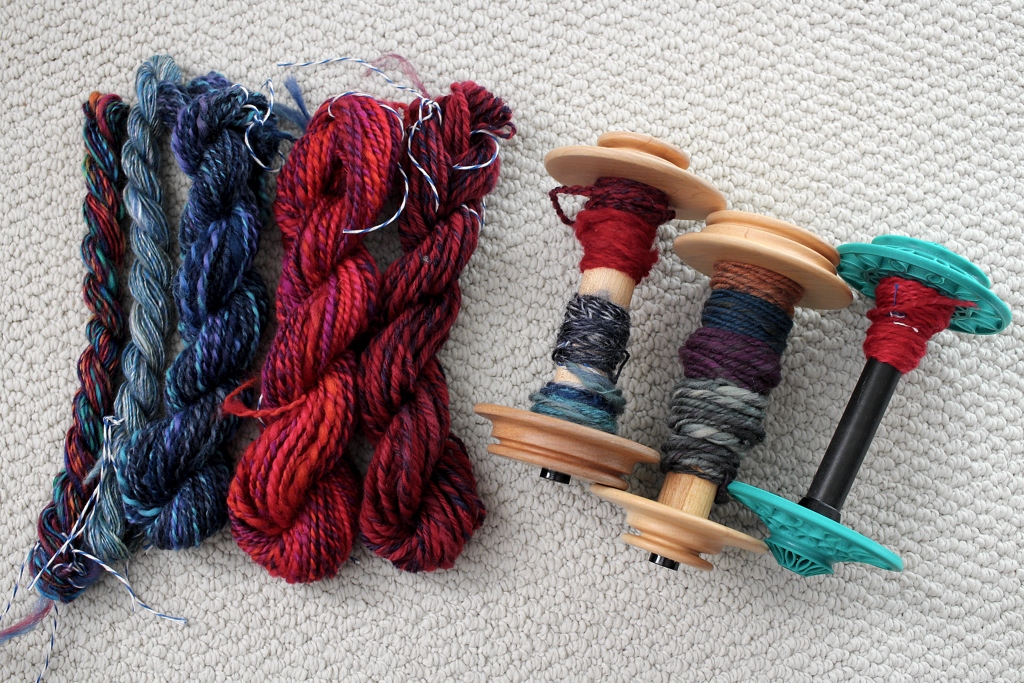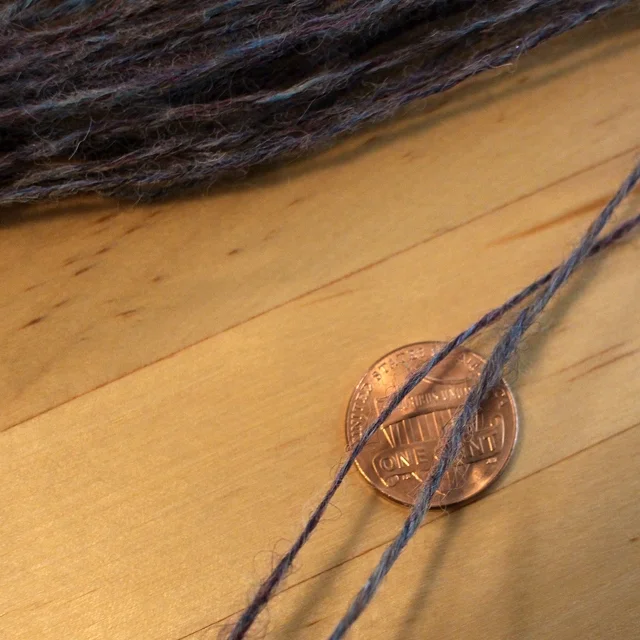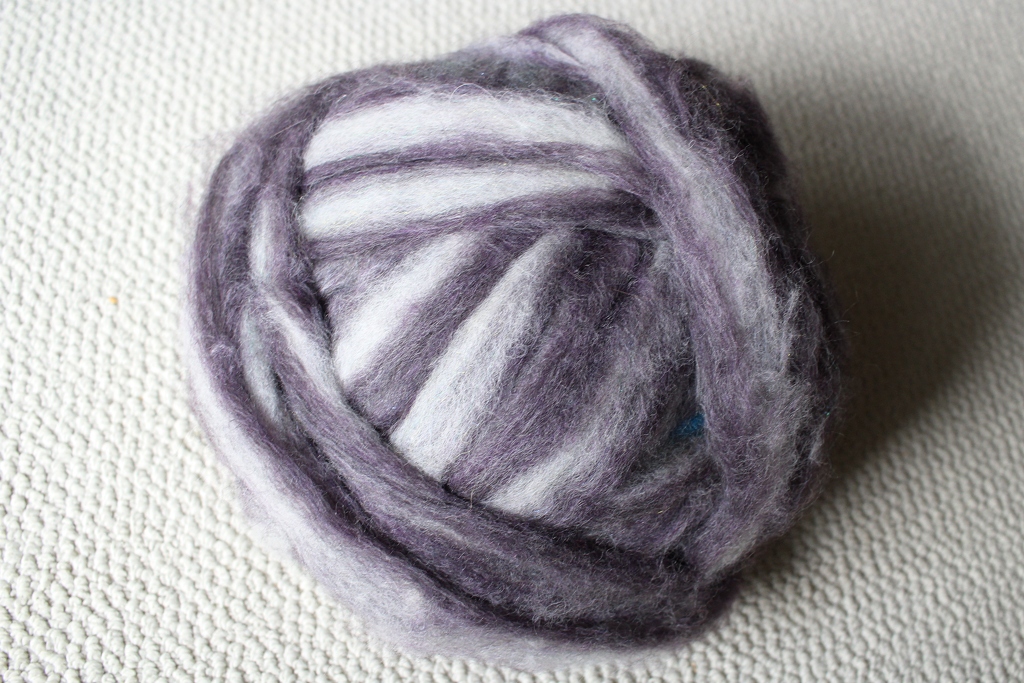Intentional Spinning vs. Playful Spinning
/I’ve really enjoyed spinning and working on the epic green yarn. It’s pushed me to be more consistent with my drafting. It’s made me be more intentional and focused on the details because I can’t spin 500+ yards of fingering yarn otherwise. On the whole, the project is going well. I’ve finished the first round of sample skeins and I’m in the middle of swatching to see how they knit up. Then I’ll spin another round of sample skeins if I need to make changes. Which means at least another round of swatching before starting on the final skein. Glad I’m not on a deadline because this handspun is not a quick project.
In the downtime between steps for the epic green yarn, I worked on a few smaller spinning projects too. The main goal of my #100HandspunDays project is to spin every day, and quick projects I don’t have to continually measure and refine let me do that. Plus, I get to play and spin to see what happens instead of working towards a specific result. Don’t get me wrong, I enjoy playful “spinning for the joy of it” as much as “spinning for a specific project”. Each of those projects scratches a particular spinning itch. Sometimes I want to play and see what happens. Sometimes I want to take notes at every step while I spin a specific yarn for a specific project. These two opposites feed and encourage each other. I’d get bored only doing one or the other. What about you?
I’ve spun a few skeins (and a few mini skeins) when the green sampling wasn’t filling up all the bobbins. The first started as a wild batt that I bought in 2016, and didn’t get a good luck at until I opened it up this month. The colors moved from yellow, to orange, and then pink with random bits of sparkle mixed in. Sunset, anyone? I wanted to preserve the colors so I split the batt into strips, pre-drafted the fiber, and spun it in order. After spinning so much time working towards a smooth, fingering yarn, it was hard to let the fiber do its thing. I picked out the veggie matter, but didn’t do anything else. The ply was thick and thin with random clumps. Chain-plying only magnified those qualities.
I talked my self out of taming the yarn so many times, and I’m glad I did. The 74 yards of more-or-less bulky yarn are so fun to look at. I’m glad I didn’t take the life out of this yarn. Now I get to figure out what to do with it.
One of my other small projects is much closer to what I normally spin. One ply is a wool/silk blend of blues, purples, and grey. I paired it with a solid grey to get more yardage. The colors are subtle, but the silk pops and catches your eye. I had leftovers of the wool/silk and plied it with itself to make a mini skein. I want to use the two yarns together for a project and the combined 160 yards gives me a lot of options. The pair might make a nice hat or fingerless mitts with extra long cuffs.
I’m still swatching the sample skeins for the epic green spin (really like what I’m seeing too). I’ve got time to spin a few more small projects, but I’m going to switch things up a bit to prep for Tour de Fleece. #100HandspunDays officially ends on July 4, and one of my goals was to learn to make batts on my drum carder. I haven’t even touched the thing yet so this week is all about playing and making batts. Then I get to spin them when Tour de Fleece kicks off on July 1. Sounds like a good plan to me.























